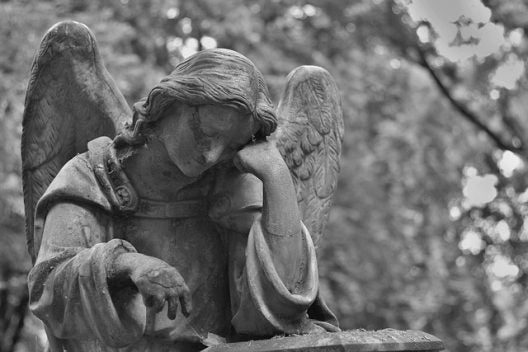Telling family stories through art: LCVA exhibit amplifies memories
Published 12:07 am Saturday, August 3, 2024

- Dr. Debra Jean Ambush pauses for a photo in her studio with her painting, “Encircling Angels,” depicting students at Robert Russa Moton High School. It will be among the works featured in “Letters from Farmville: Reflections on Ancestral Arrival into Descendant Memory” opening on Sept. 6 at the Longwood Center for the Visual Arts.
|
Getting your Trinity Audio player ready...
|
A trunk full of papers, photographs, letters and more became the gateway to discovery of family history as well as artistic inspiration for a woman whose family hails from the Farmville area. Now, these documents as well as artwork based on them and created by Dr. Debra Jean Ambush will be on display at the Longwood Center for the Visual Arts (LCVA) in an upcoming exhibit.
“Letters from Farmville: Reflections on Ancestral Arrival into Descendant Memory” will be on display from Sept. 6 to Jan. 21. An opening reception for the LCVA project is planned on Sept. 6 from 5:30 to 8 p.m.
In the exhibit, Ambush tells her family narrative through more than 30 pieces of art, reaching back to her great-grandmother, Henrietta Branch Hudson, who was born to enslaved parents, Peter and Dinah Branch, in 1858 in the Farmville area. From there, Ambush traces her family through post-emancipation, Jim Crow, the Civil Rights Movement, and finding freedom and advancement through education.
“I felt like this was a way to not only honor them but to bring honor to the community as we’re thinking about the 70th anniversary of Brown v. Board of Education,” Ambush said. “I think my motivation was to help the community remember that the story doesn’t begin with Brown v. Board of Education. There are values, there are goals, there are ideals that are in place about one’s own humanity prior to the efforts that happened with the Brown decision. This allows the visual arts to tell that story.”
A Moton connection to LCVA exhibit
Ambush, who holds her doctoral degree in art education from Ohio State University, said one of her uncles, Alphonzo Bigger, was a ninth-grader at Robert Russa Moton High School in 1951 when a student-led walkout and strike took place. Several extended family members also participated. He is listed as a plaintiff in the resulting court case, which was one of several from around the country that were consolidated in the Brown Supreme Court case.
“There are so many families that were impacted — forced migration and forced relocation so that they could finish their schooling,” Ambush said. “We have members of the family who moved on to other places, who were displaced by hatred.”
Ambush, a resident of Ijamsville, Md., said it is important for younger generations to learn and understand this history.
“I think this is a key time in our country’s history to understand the challenges we have are not new,” she said. “How we came together — that’s so key and so important at this moment in time. We need that information to move forward.”
Family documents stretch back
Ambush and family members discovered the trunk that inspired this exhibit in a family farmhouse in the Farmville area in 1989. As she examined the letters, books, photographs and other papers dating as far back as 1872, a story emerged of her family to which she was previously uninitiated.
“It is really a watershed moment of understanding the full gravity of who this family was and understanding unknown connections that I was not fully aware of,” she said. “For me as an artist, it presented a question of how do we coexist in contemporary society with what are primarily century-old remnants of ancestral memory?”
The trunk held items as varied as teacups and old gradebooks from family members who were educators. But one of the most poignant pieces, a letter highlighted in the show, was from Ambush’s great-aunt, Julia Hudson Anderson, writing to her niece, Laura Bigger Womack, about her own memories of what she heard said about slavery.
“What makes this project so powerful is there is this remembering,” Ambush said.
LCVA exhibit draws from ‘The Site of Memory’
Ambush also drew inspiration from Toni Morrison’s essay “The Site of Memory.” “How is it that we can go to a site of memory and understand the remnants of what is there?” Ambush asked. “This trunk … was really someone’s effort to remember some tangible thing. The deliberateness of bracketing what they themselves had experienced with the ancestral eye, their own discernment, and imagining it would someday arrive to the hearts and minds of descendants — I think that’s a pretty powerful notion to think about. It’s the intended effect of blueprinting knowledge for future generations.”
Ambush’s work would be impactful anywhere, but it is especially so displayed in Farmville.
“This venue was particularly meaningful for me, because I know it to be the ancestral home of my family,” she said. “I wanted a way to lift (my family) up and express how important they were on a national and international level, the sacrifices they made.”
When does it happen?
The LCVA exhibit will be on display from Sept. 6 to Jan. 21. If you want to see it, the Longwood Center for the Visual Arts is open from 11 a.m. to 5 p.m. Tuesday through Saturday and 1 to 5 p.m. Sunday. It is located at 129 N. Main St. in Farmville. For more information, call 434-395-2206.





